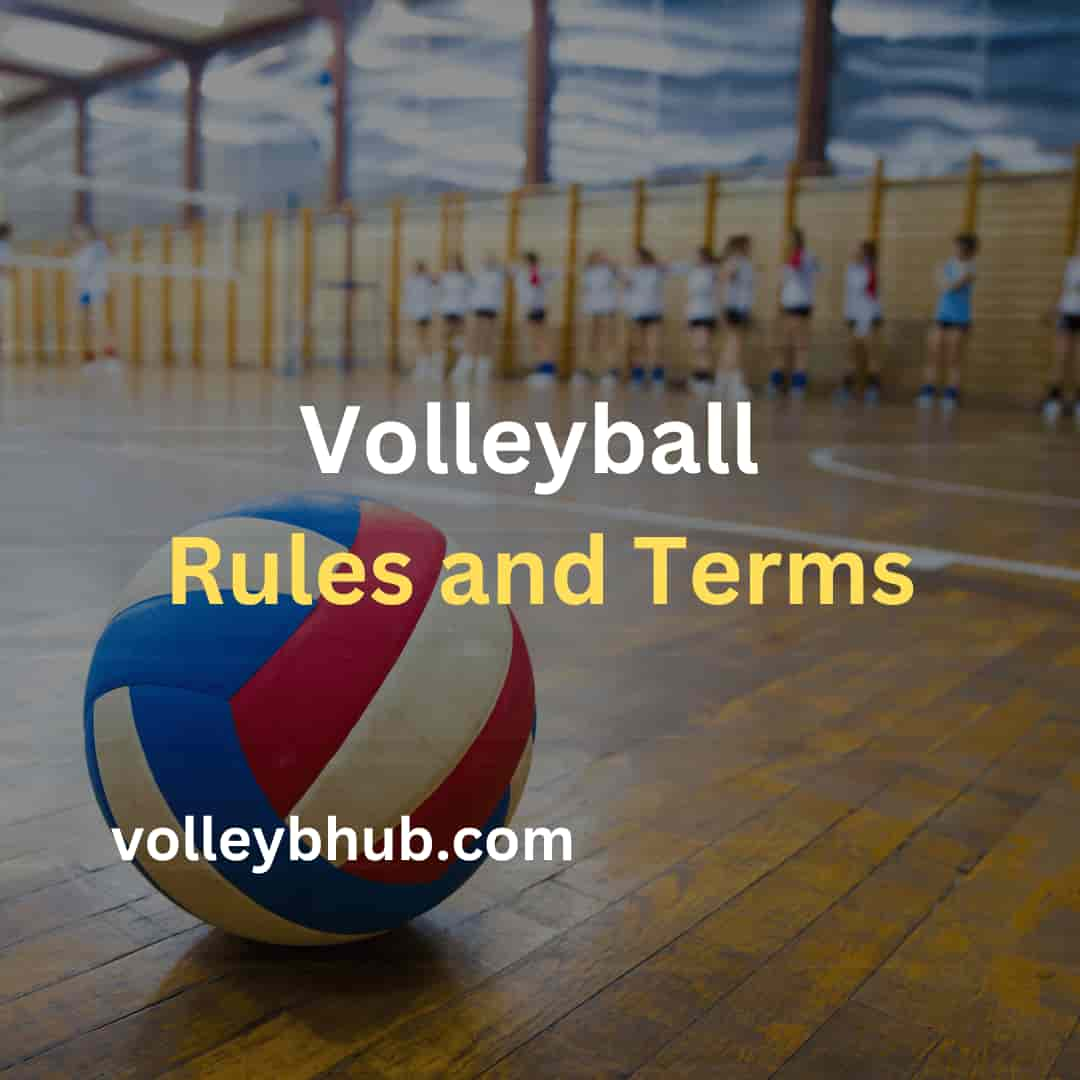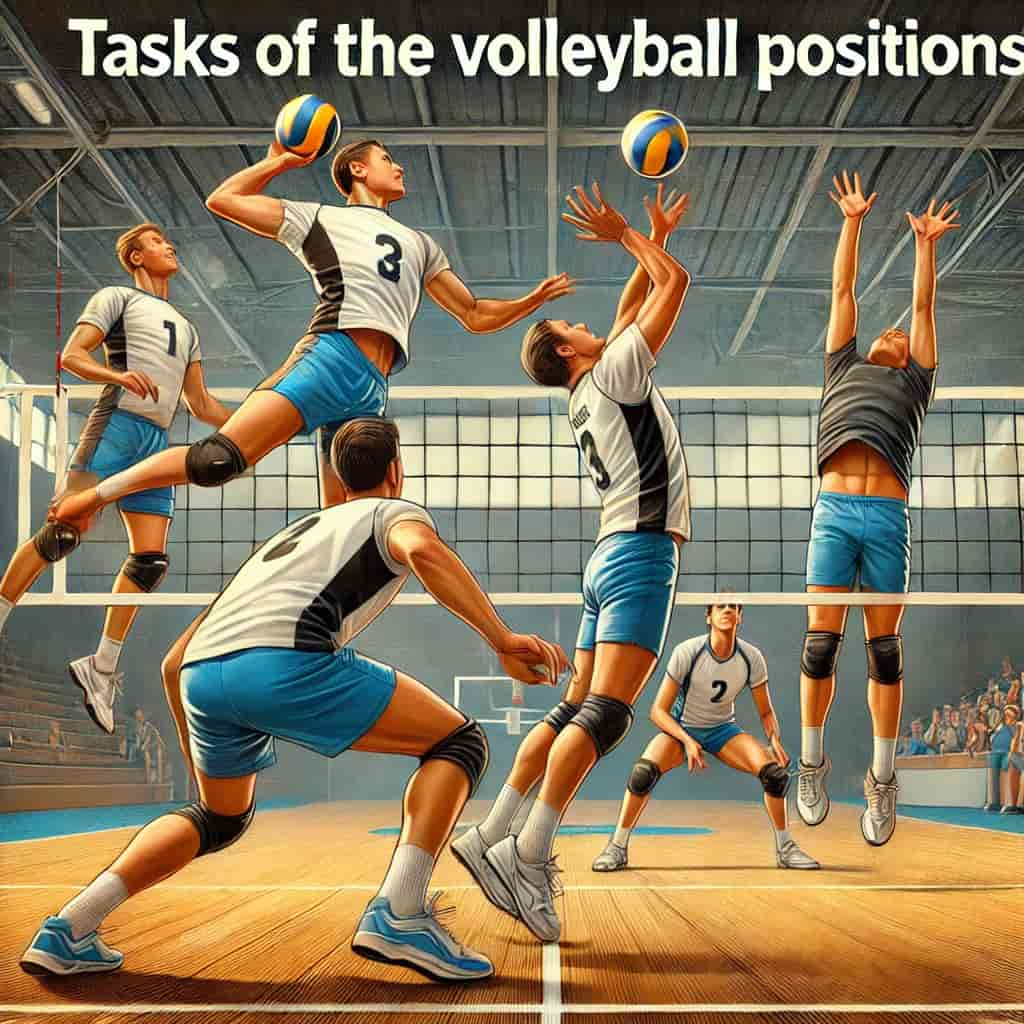
Volleyball Essentials: Rules and Terms Explained
Volleyball is an engaging sport that requires a thorough understanding of its rules and terminology for effective play. Whether you’re starting fresh or looking to polish your skills, this guide covers the crucial aspects needed for success. Here’s what we’ll cover:
- Playing Volleyball: A simple breakdown of the basic techniques and strategies for engaging in the sport.
- Understanding Volleyball Rules: An overview of the official regulations that dictate how the game is played.
- Recognizing Rule Violations: Insights into common infractions to help you avoid penalties.
- Volleyball Terminology: Definitions of key terms used in volleyball to aid in learning the game and improving communication on the court.
- Dimensions of a Volleyball Court: Detailed information on the layout and measurements of an indoor volleyball court.

Fundamentals of Volleyball: Game Structure and Scoring
Volleyball is a dynamic team sport played with two teams, each consisting of six players, divided by a net. The positions include setter, middle blocker, outside hitter, opposite hitter, libero, and serving specialist.
- Initiating the Game: The match begins with a coin toss to decide which team serves first.
- Gameplay Mechanics: Teams exchange the ball across the net (rally) until a fault is committed, with a limit of three touches per team per rally.
- Scoring Points: Points are scored by landing the ball in the opponent’s court or when the opposing team commits a fault.
- Match Composition: Matches are typically organized into sets, played either to three or five sets.
- In a three-set match, the first two sets are played to 25 points and the deciding third set to 15 points, requiring a two-point lead to win a set. The team that wins two sets wins the match.
- In a five-set match, the first four sets are to 25 points and the final set to 15 points. A team must win by a two-point margin, with the first team to win three sets declared the match winner.
Read Also: 6-2 Volleyball Rotation
Key Volleyball Rules and Common Violations
Essential Volleyball Rules
Volleyball involves precise rules to maintain fair play among teams. Here are the essential guidelines every player should know:
- Player Arrangement: Each team has six players, divided into three in the front row and three in the back.
- Scoring System: Points are awarded on every serve for the team winning the rally, known as rally-point scoring.
- Successive Hits: Players are prohibited from touching the ball twice in succession; however, blocking does not count as a hit.
- Ball Interaction: The ball can touch the net during a volley and on serves.
- Inbounds Rule: A ball landing on the boundary line is considered in play.
- Out of Bounds: Balls that contact the antenna, land fully outside the court, hit the net or cables outside the antenna, or touch the referee stand, pole, or ceiling above a non-playable area are out.
- Legal Contact: Players may use any part of their body to contact the ball.
- Illegal Actions: Catching, holding, or throwing the ball are not permitted.
- Service Restrictions: Players cannot block or attack a serve from on or inside the 10-foot line.
- Position Switching: Players at the net can switch positions after a serve.
- Match Structure: Matches consist of sets, the number of which varies by the level of play.

Common Rule Violations
Violating these rules results in points for the opposing team:
- Service Line Errors: Stepping on or across the service line during a serve.
- Service Faults: Failing to serve the ball successfully over the net.
- Handling Errors: Illegal contacts such as double touching, lifting, carrying, or throwing the ball.
- Net Interference: Touching the net during play.
- Overreaching: Blocking or attacking the ball by reaching over the net prematurely.
- Court Boundary Violations: Crossing the centerline of the court with any part of the body, except for a hand or foot, unless the entire hand or foot crosses.
- Rotation Errors: Serving out of rotation or order.
- Back Row Violations: Illegal blocks or attacks by back row players who are near the net and above it or attacking from inside the front zone when the ball is above the net.
Essential Volleyball Terminology: A Comprehensive Guide
Volleyball is a dynamic sport with a specific set of terms crucial for any player or enthusiast to understand. This guide offers a concise overview of the vocabulary used in volleyball, from basic techniques to complex plays, helping you communicate effectively on and off the court.
Basics
- Ace: A serve resulting in a point without the ball being returned.
- Antennae: Rods on the net defining the boundaries; balls hitting these are out.
- Assist: A set leading directly to a teammate’s successful attack.
- Attack: Attempting to score by hitting the ball to the opponent’s side.
Defensive Moves
- Block: Intercepting a ball from an opposing player’s attack, with variations like Soft Block and Hard Block for strategic defense.
- Dig: A defensive move retrieving an aggressive hit close to the floor.
- Double Block: Two players coordinating to stop the ball at the net.
Offensive Plays
- Spike: A forceful strike of the ball aimed at the opponent’s court.
- Quick Set: A strategy using rapid, low passes to outmaneuver blockers.
- Back Row Attack: Attacks initiated from behind the attack line by back row players.
Serving Techniques
- Jump Serve: A powerful serve where the player tosses and hits the ball mid-air.
- Floater: A serve with no spin, causing erratic ball movement.
Positions and Formations
- Libero: A defensive specialist with restrictions in attack.
- Outside Hitter: A versatile player usually positioned near the antennas.
- Setter: A key player responsible for orchestrating the offense by setting the ball.
Penalties and Violations
- Foot Fault: Improper foot placement when serving, crossing the center line.
- Double Hit: Illegal consecutive contacts by the same player without the ball being hit by another.
Miscellaneous Terms
- Six-pack: Colloquially, getting hit in the face by the ball.
- Wipe: Deliberately spiking the ball off an opponent’s block out of bounds.
Strategic Terms
- Overlap: A fault for out-of-order positioning.
- Switch: Adjusting positions post-serve to optimize team strengths.
FAQ’s: Volleyball Rules and Terms
What are the basic rules and regulations in volleyball?
In volleyball, each team has six players on the court, divided into three in the front row and three in the back row. Scoring follows the rally-point system, where points can be earned by the serving team when they win the rally. Additionally, a player is not allowed to hit the ball twice in a row, but blocks do not count as hits.
How many sets are there in volleyball rules?
Volleyball matches consist of up to five sets. The first four sets require a team to score 25 points to win, needing a lead of at least two points. If the match extends to a fifth set, this final set is played to 15 points, again requiring a two-point lead to secure victory.
How many touches are allowed in volleyball?
In volleyball, a team is permitted to touch the ball up to three times before it must be sent over the net. However, no single player is allowed to touch the ball consecutively during these three opportunities. After the opposing team touches the ball, the count resets, allowing for three more touches.
What is the principle of volleyball?
The main goal in volleyball is to make the ball land on the opponent’s side of the court while preventing it from landing on your own side. Players strive to keep the ball in play, often enduring scrapes and bruises in the process.
What is the golden set rule in volleyball?
In volleyball, if teams are tied in points at the end of a match series, a Golden Set is played immediately after the last match. This tiebreaker set is played to 15 points, and a team must win by at least two points, consistent with the rules of other sets.
What is the main objective of volleyball?
The primary goal in volleyball is to send the ball over the net and make it land in the opponent’s court. A team scores a point if the ball touches the floor on the opponent’s side or if the opponent fails to return the ball properly. Each team has up to three touches to achieve this.





